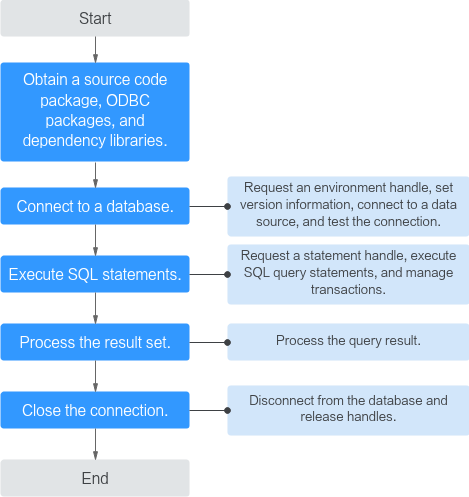Development Process
Figure 1 shows the ODBC-based development process.
The process includes obtaining a source code package, ODBC packages, and dependency libraries, connecting to a database, executing SQL statements, processing the result set, and closing the connection.
Feedback
Was this page helpful?
Provide feedbackThank you very much for your feedback. We will continue working to improve the documentation.See the reply and handling status in My Cloud VOC.
For any further questions, feel free to contact us through the chatbot.
Chatbot






